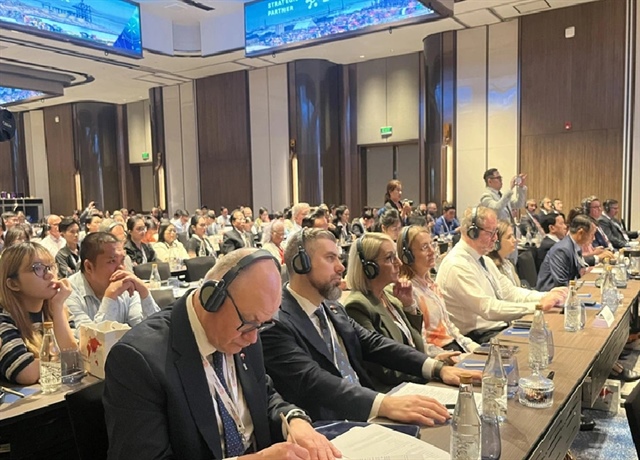Vietnam, Poland boost sea transport connection
Vietnam, Poland boost sea transport connection
An increase in demand for goods and services between Vietnam and Poland has led to stronger maritime transport connection between the two nations, according to what was discussed at a Vietnam-Poland trade conference in Ho Chi Minh City on Thursday.

Poland is an important trade partner of Vietnam. Photo: Quang Dinh / Tuoi Tre |
Tran Ngoc Liem, director of the Vietnam Chamber of Commerce and Industry - Ho Chi Minh City Branch, said many Vietnamese logistics enterprises had launched cargo shipping routes between Vietnam and Poland.
However, there is still ample room for the two sides’ cooperation.
With a coast of more than 3,260 kilometers, Vietnam is a top-10 country in terms of the coastline to territorial area ratio. The nation has developed maritime transport infrastructure, including Hai Phong, Da Nang, Cat Lai, Cai Mep, Phu Huu, Tan Thuan, and Ben Nghe ports.
Poland also boasts a rich port system, including Gdansk, Gdynia, and Szczecin ports.
Gdansk Port is one of the largest in Poland, handling nearly 17.8 million metric tons of cargo per year.
It is a major international transport hub which plays an important role in the trans-European transport corridor connecting Nordic countries with Eastern and Southern Europe.
With its strategic location, Gdansk Port is an ideal entry point for Vietnamese goods to the European market and a gateway for Polish and European products to be sent to the Vietnamese market, according to Dorota Pyć, chairwoman of the Gdansk Port Authority’s board of directors.
Pyć highlighted that cooperation between Vietnamese and Polish enterprises will not only facilitate trade but also enhance logistics efficiency, reduce transport time, and ensure that firms remain competitive in a demanding global market.
As production shifts, the volume of goods from Southeast Asia to Europe will continue to rise, further boosting this cooperation.
Still, there are risks as freight routes become more crowded, forcing enterprises to seek alternatives to ensure the effectiveness of their trade activities, Pyć added.
Joanna Skoczek, Polish Ambassador to Vietnam, said Poland wants to trade higher-value products with Vietnam to meet the demands of the global economy.
It is now time for Polish companies to venture into the Vietnamese market and discover its potential on a larger scale, the ambassador noted.
Poland's exports to Vietnam grew nearly 20 percent last year, underscoring the strengthening trade ties between the two nations, with the Southeast Asian country having emerged as Poland’s largest trading partner among ASEAN countries.
In January-October, the two nations’ bilateral trade reached US$2.8 billion, up 21.8 percent year on year.
Of the total, Vietnam exported over $2.5 billion worth of products to the European country and spent more than $321 million importing Polish commodities, rising 24.3 and five percent, respectively.
Poland ranks 34th out of the 148 countries and territories with investments in Vietnam, with 33 projects and a combined registered capital of some $474 million as of October 31.
In Ho Chi Minh City, Polish investors have invested in 10 projects, ranking 64th among the 117 countries and territories making investments in the southern Vietnamese metropolis.


























